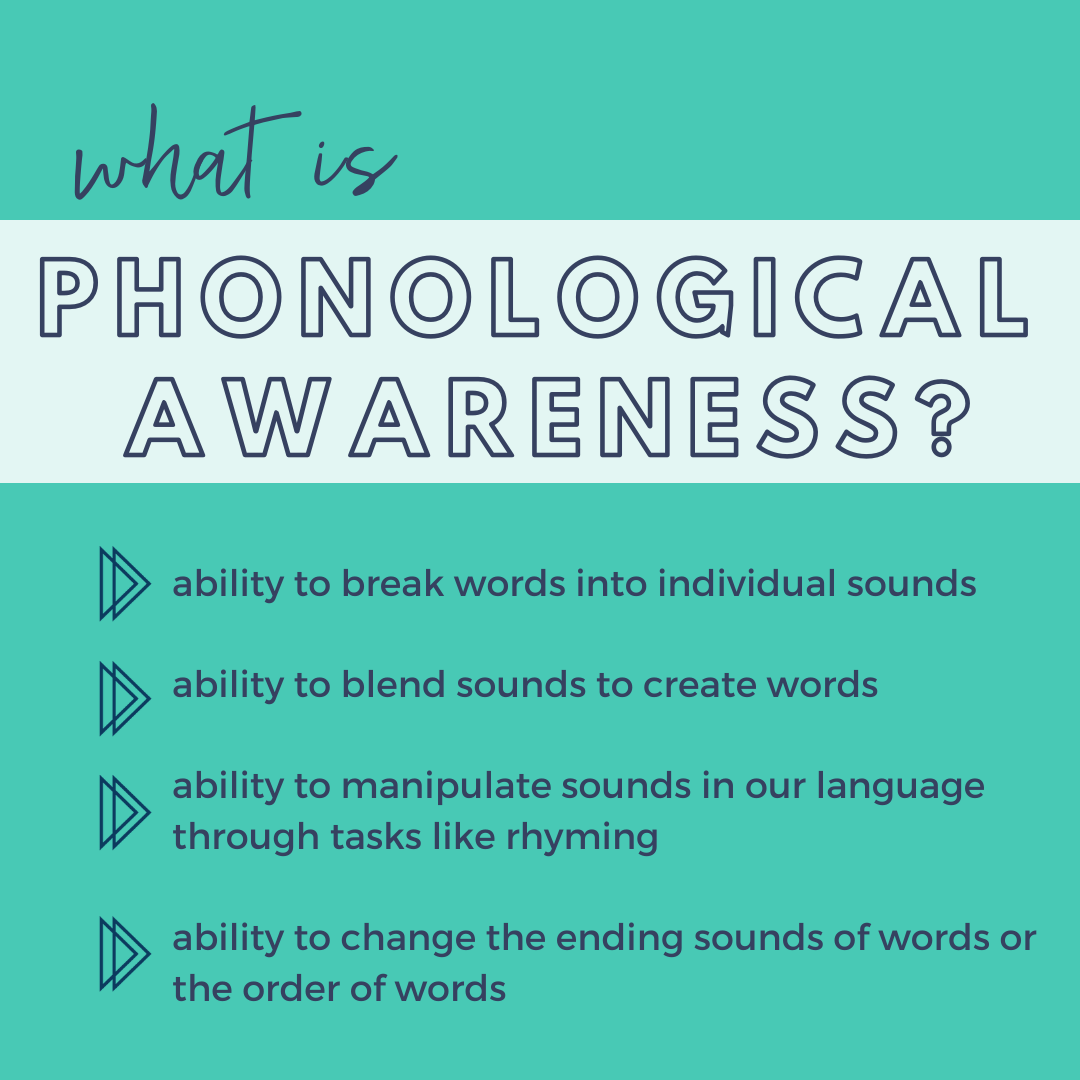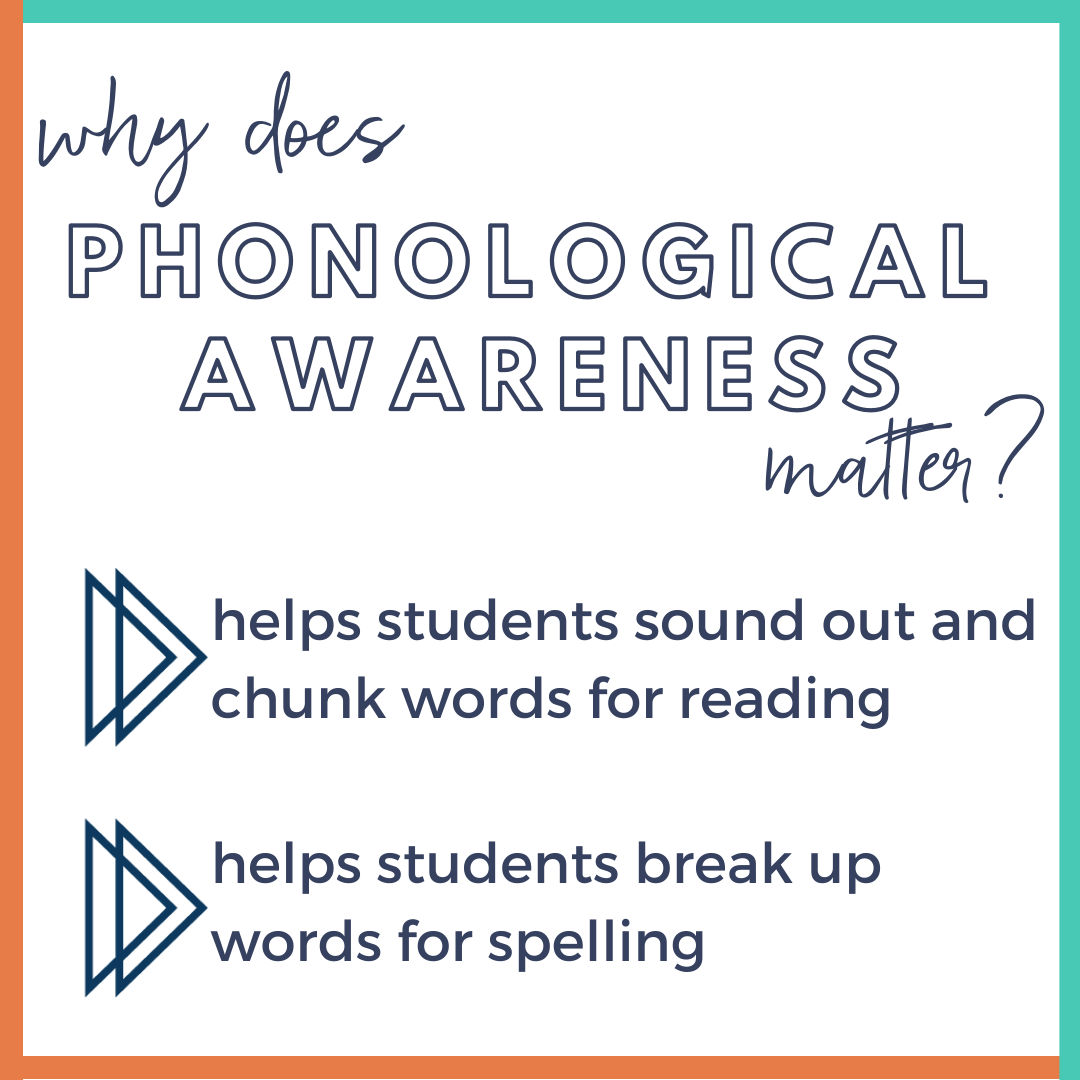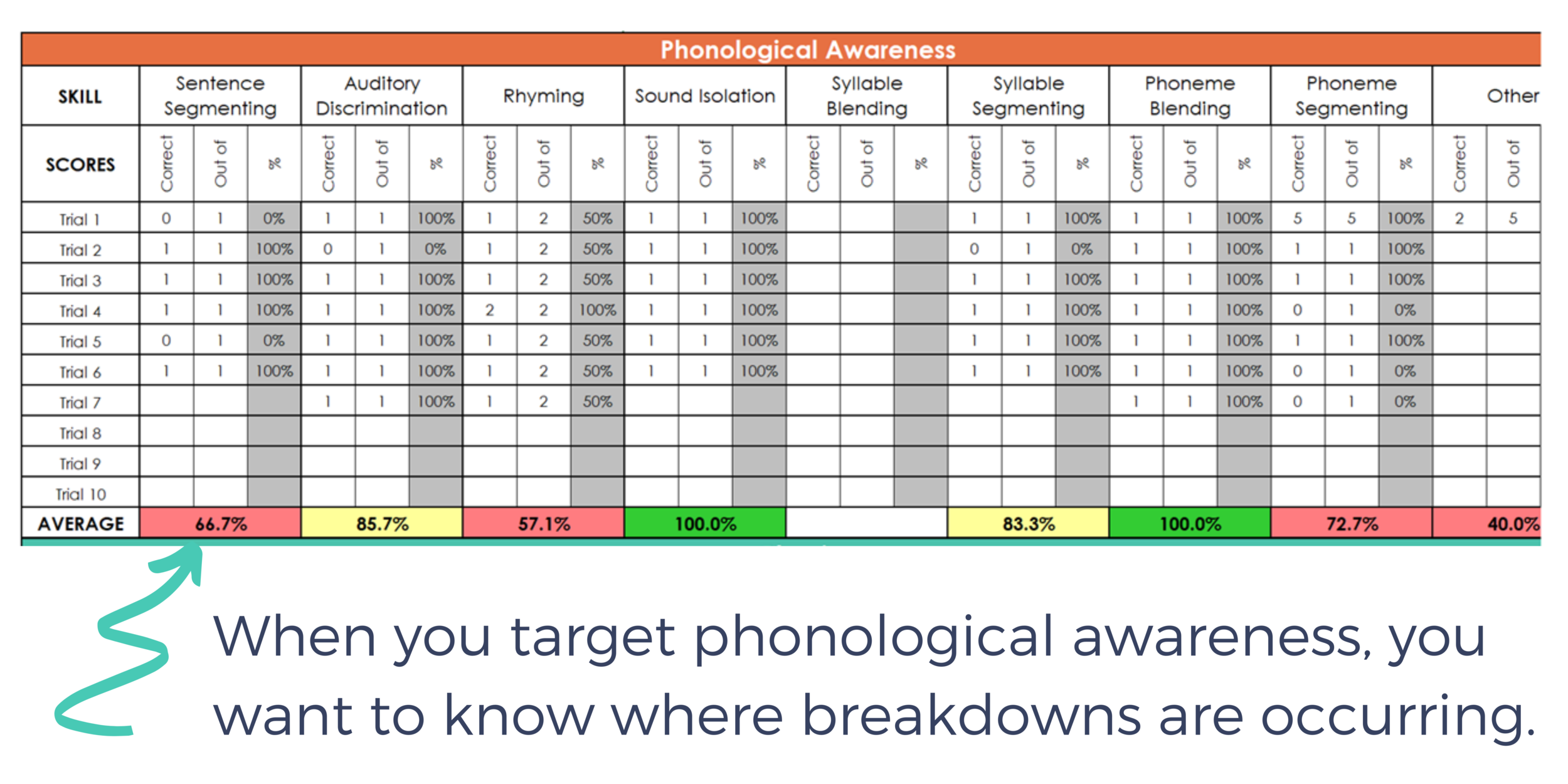How to Teach Phonological Awareness using a Research-Based Approach
Does the mention of research-based literacy instruction get you excited or nervous?!?
If you’re anything like us, the idea of research-based instruction and data-driven practices gets you super excited….but if it makes you nervous, that’s okay too!
There’s so much information out there and it can definitely feel overwhelming, especially when there are so many different components to be pulling together.
But here’s the thing, research-based instruction does not have to be hard. Our goal is to give you a clear framework you can use to implement research-based instruction no matter how you currently feel about research-based instruction!
First things first -
What is phonological awareness?
We’re so glad you asked, at the simplest level - it’s understanding the sounds of our language. It includes skills that we need to break words up into individual sounds and blend sounds together in order to “sound words out.” Phonological awareness DOES NOT require any knowledge of letters. Students could complete phonological awareness drills completely in the dark (meaning they don’t need to be reading or recognizing letters at all). The number of sounds in words and letters in words are not always the same!
There are 7 Steps to a SMARTER Research-Based Instruction Framework (we use the acronym SMARTER to help remember each of the key components!)
1 - Systematic Instruction
Phonological Awareness instruction has a progression for both reading and spelling
The progression is the sequence or order in which you teach specific skills. In research-based instruction, skills are building on one another and progressing from the most basic concepts to the most complex concepts.
2 - Multisensory Instruction
Phonological awareness instruction should incorporate multiple senses wherever possible!
Many struggling readers and writers struggle specifically with phonological awareness. One of the best ways to help support these students is to help them see and feel how words break down since many of them can’t process the sounds easily. You can do this by pulling in visuals, having students practice placing their hand under their chin to feel the drop in the vowel sound, and/or by using motor cues.
3 - Applied Instruction
Phonological awareness instruction should be directly tied to reading and spelling!
The biggest mistake we made when we started out was not drawing a direct connection between phonological awareness activities and how those activities applied to reading and writing. We want to be clear - phonological awareness DOES NOT require letter knowledge or pairing letters with sounds, it’s just understanding of sounds - however, we APPLY phonological awareness instruction by pairing sounds with letters and thereby progressing into phonics-based instruction.
For example, as you begin reading multi-syllabic words you could show students the connection between the letter patterns they see and syllables. Or as we hear words, breaking them up and identifying the different types of sounds that we hear (e.g., consonant sounds, vowel sounds, r-controlled sounds).
4 - Research Behind the Instruction
Research supports explicit teaching of phonological awareness to support decoding & reading fluency.
Decades of research support the fact that phonological awareness is a foundational skill that provides not only priming (priming is a fancy way of saying “getting readiness” in research) to later word recognition (reading) skills but also these phonological awareness skills are important because they are solid early predictors of later literacy acquisition.
Meaning, when we recognize that these skills are not developing for students we can predict that they may have later struggles with word recognition (the ability to read words) and with reading efficiency or fluency. Therefore it is important to teach these skills to our developing readers and to recognize where breakdowns are occurring.
Kuppen, S.E.A., and Bourke, E. (2017), Rhythmic Rhymes for Boosting Phonological Awareness in Socially Disadvantaged Children. Mind, Brain, and Education, 11: 181-189. https://doi.org/10.1111/mbe.12148
Vazeux, M., Doignon-Camus, N., Bosse, M. L., Mahé, G., Guo, T., & Zagar, D. (2020). Syllable-first rather than letter-first to improve phonemic awareness. Scientific reports, 10(1), 22130. https://doi.org/10.1038/s41598-020-79240-y
Kilpatrick, D. (2015). Essentials of Assessing, Preventing, and Overcoming Reading Difficulties (NJ: Wiley).
5 - Targeted Instruction
You target specific phonological awareness skills by understanding specifically where students have strengths and where the breakdowns are occurring.
When teaching phonological awareness we need to first understand where students are breaking down and second, we need to understand how those difficulties are impacting a student’s reading and spelling performance. Once we know where the breakdowns are occurring, we can begin to target those specific skills and make sure we are seeing the transfer between the isolated skill and the application of that ability to reading and spelling.
6 - Explicit Instruction
The biggest hallmark of research-based instruction is that the instruction must be taught explicitly, meaning that we don’t assume students have prior knowledge of foundational reading and spelling concepts just because of their age or reading/spelling ability. When we teach phonological awareness, the explicit skills we want to target include the progression of skills that support reading (specifically decoding, or the ability to sound out words) and spelling.
Again keeping in mind, that when we target phonological awareness - we are providing the letter sounds not the letter names.
Explicit Phonological Awareness Skills to Support Reading…
includes rhyming, blending syllables and phonemes (again, “phoneme” is a fancy word for sound), and manipulating or changing phonemes or sounds within words.
Explicit phonological awareness skills to support spelling
Include the ability to discriminate or differentiate between similar sounds, isolate sounds within words, and segment (break down) sentences, syllables, and phonemes.
7 - Realistic Instruction
Do what you can with what you have, where you are.
Now obviously there is A LOT that goes into research-based instruction for phonological awareness, but again, it does not have to be difficult. One of the best things you can do is to start thinking about where you can incorporate these activities into what you’re already doing. For example, if students are practicing reading words you can simply ask them: how many syllables do you hear? how many sounds do you hear? what if we changed the first sound? No extra materials are needed. The best instruction is the instruction you can actually deliver and keep up with, without burning yourself out!!!
And if you’re interested in diving deeper into effective phonological awareness and other science of reading based instruction, check out the SOR Blueprint using the button below.



























